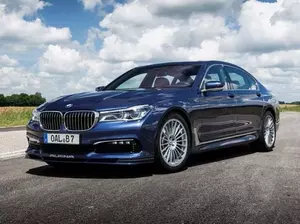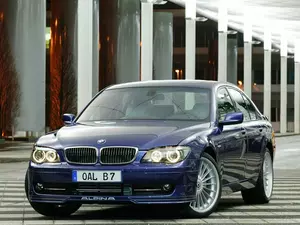
| Vehicle | Precise engine size | Difference from world average | Engine size to consumption ratio | Horsepower from 1 L | Engine size to 100 kg of weight |
|---|---|---|---|---|---|
| 4.4 V8 |
4.4 L (4395 cc) |
87.3% bigger | 209 cc to 1 mpg | 138 hp from 1 L | 209 cc to 100 kg |
| Vehicle | 4.4 V8 |
|---|---|
| Precise engine size | 4.4 L (4395 cc) |
| Difference from world average | 87.3 bigger |
| Engine size to consumption ratio | 209 cc to 1 mpg |
| Horsepower from 1 L | 138 hp from 1 L |
| Engine size to 100 kg of weight | 209 cc to 100 kg |

| Vehicle | Precise engine size | Difference from world average | Engine size to consumption ratio | Horsepower from 1 L | Engine size to 100 kg of weight |
|---|---|---|---|---|---|
| 4.4 V8 |
4.4 L (4395 cc) |
87.3% bigger | 191 cc to 1 mpg | 138 hp from 1 L | 220 cc to 100 kg |
| Vehicle | 4.4 V8 |
|---|---|
| Precise engine size | 4.4 L (4395 cc) |
| Difference from world average | 87.3 bigger |
| Engine size to consumption ratio | 191 cc to 1 mpg |
| Horsepower from 1 L | 138 hp from 1 L |
| Engine size to 100 kg of weight | 220 cc to 100 kg |

| Vehicle | Precise engine size | Difference from world average | Engine size to consumption ratio | Horsepower from 1 L | Engine size to 100 kg of weight |
|---|---|---|---|---|---|
| 4.4 V8 |
4.4 L (4395 cc) |
87.3% bigger | 191 cc to 1 mpg | 123 hp from 1 L | 209 cc to 100 kg |
| Vehicle | 4.4 V8 |
|---|---|
| Precise engine size | 4.4 L (4395 cc) |
| Difference from world average | 87.3 bigger |
| Engine size to consumption ratio | 191 cc to 1 mpg |
| Horsepower from 1 L | 123 hp from 1 L |
| Engine size to 100 kg of weight | 209 cc to 100 kg |

| Vehicle | Precise engine size | Difference from world average | Engine size to consumption ratio | Horsepower from 1 L | Engine size to 100 kg of weight |
|---|---|---|---|---|---|
| 4.4 V8 |
4.4 L (4395 cc) |
87.3% bigger | 191 cc to 1 mpg | 123 hp from 1 L | 200 cc to 100 kg |
| Vehicle | 4.4 V8 |
|---|---|
| Precise engine size | 4.4 L (4395 cc) |
| Difference from world average | 87.3 bigger |
| Engine size to consumption ratio | 191 cc to 1 mpg |
| Horsepower from 1 L | 123 hp from 1 L |
| Engine size to 100 kg of weight | 200 cc to 100 kg |

| Vehicle | Precise engine size | Difference from world average | Engine size to consumption ratio | Horsepower from 1 L | Engine size to 100 kg of weight |
|---|---|---|---|---|---|
| 4.4 i 32V |
4.4 L (4398 cc) |
87.5% bigger | - | 114 hp from 1 L | 220 cc to 100 kg |
| 4.4 i V8 32V L |
4.4 L (4398 cc) |
87.5% bigger | - | 114 hp from 1 L | 220 cc to 100 kg |
| Vehicle | 4.4 i 32V |
|---|---|
| Precise engine size | 4.4 L (4398 cc) |
| Difference from world average | 87.5 bigger |
| Engine size to consumption ratio | - |
| Horsepower from 1 L | 114 hp from 1 L |
| Engine size to 100 kg of weight | 220 cc to 100 kg |
| Vehicle | 4.4 i V8 32V L |
| Precise engine size | 4.4 L (4398 cc) |
| Difference from world average | 87.5 bigger |
| Engine size to consumption ratio | - |
| Horsepower from 1 L | 114 hp from 1 L |
| Engine size to 100 kg of weight | 220 cc to 100 kg |

| Vehicle | Precise engine size | Difference from world average | Engine size to consumption ratio | Horsepower from 1 L | Engine size to 100 kg of weight |
|---|---|---|---|---|---|
| 3.5 |
3.43 L (3430 cc) |
46.2% bigger | 163 cc to 1 mpg | 93 hp from 1 L | - |
| Vehicle | 3.5 |
|---|---|
| Precise engine size | 3.43 L (3430 cc) |
| Difference from world average | 46.2 bigger |
| Engine size to consumption ratio | 163 cc to 1 mpg |
| Horsepower from 1 L | 93 hp from 1 L |
| Engine size to 100 kg of weight | - |